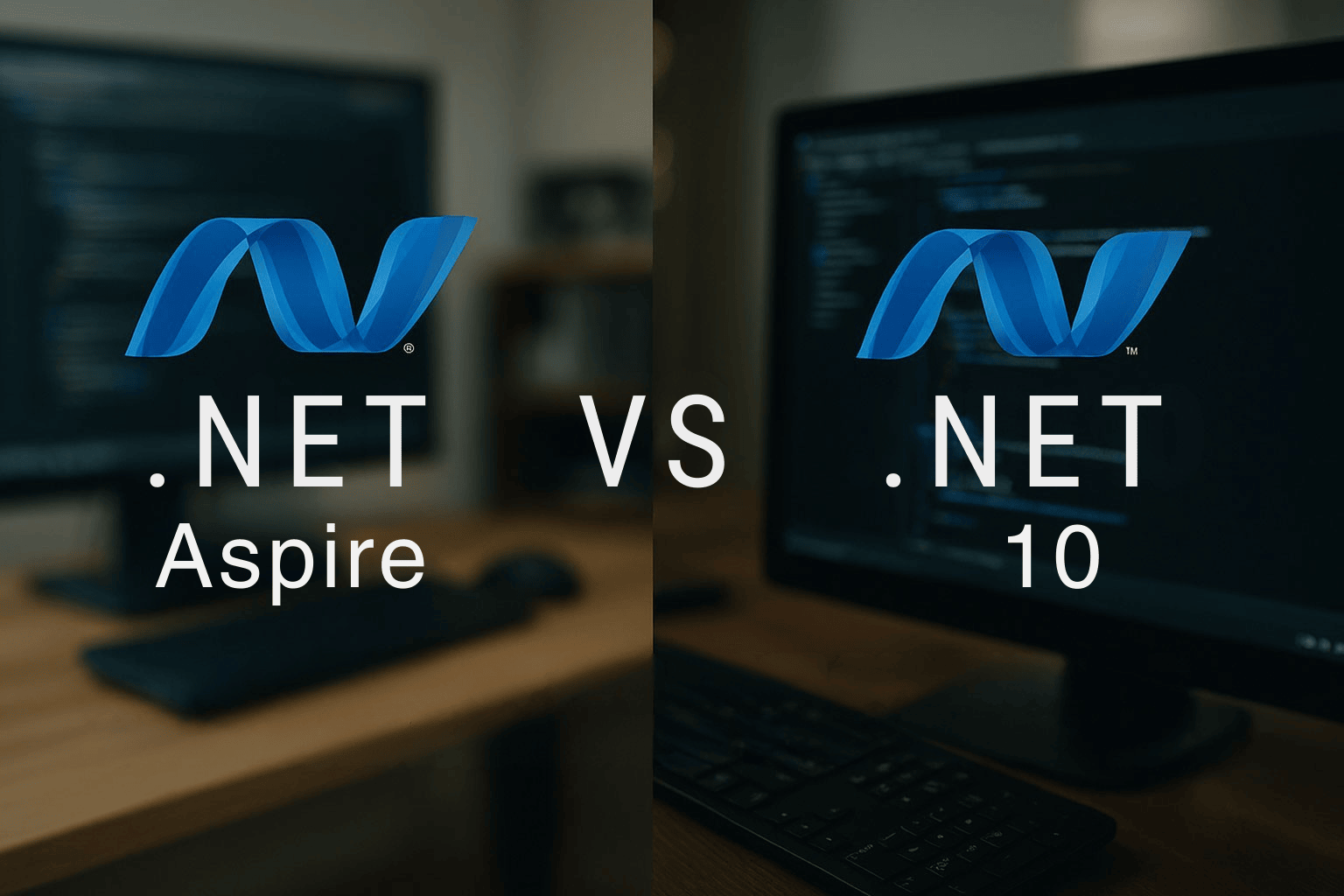Enable Native AOT in .NET 8: Step-by-Step Guide + Benchmarking Performance Gains
.jpeg)
06 Nov 2025
The new age of .NET speed and efficiency.
People are no longer concerned about the perceived speed of an app in 2025, but the efficiency at which it scales. Milliseconds saved during startup, megabytes of the deployment, will be the difference between customers enjoying a seamless experience and reduced costs on the cloud.
This is the reason why the Microsoft .NET 8 Native AOT (Ahead-of-Time) compilation is now a new standard among developers of API, microservices, and web applications that are enterprise-ready.. It turns your .NET code into a pre-compiled, self-contained native binary that runs instantly no Just-In-Time (JIT) compilation, no waiting, no runtime overhead.
At NanoByte Technologies, our customers in the fintech, healthcare, and logistics industries have been able to save almost 70 percent of turnaround times and cut container images by half by just switching to Native AOT. This blog explores how to make it and what type of practical performance improvement you can look forward to.
1. What is Native AOT in .NET 8, and why does it matter?
Ordinarily, JIT compilation is used in .NET apps. When your application is executed, the .NET runtime translates a bridge code intermediate language into machine code. It is quite flexible, and it introduces a performance tax, particularly at startup, and it makes runtime dependencies.
The process is reversed in Native AOT, which first appeared in .NET 7 and has been improved in .NET 8. Rather than compiling during execution, it pre-compiles into a single native binary, which is immediately ready to execute as soon as it is launched.
Think of it this way:
- JIT is as though it is a document you translate every time you read it.
- AOT is akin to making it directly available to your reader in his or her language.
The result: faster startup, smaller memory usage, and simplified deployment.
Native AOT has more confidence in the cloud footprint and steady operation on current environments, especially serverless applications, API load balancers and containerized loads.
2. The business and technical benefits of .NET 8 Native AOT
| Benefit |
Why It Matters |
| Instant Startup |
Apps start up to 80 percent faster, important for APIs and functions with high cold start frequencies. |
| Smaller Deployment Size |
Eliminates idle runtime components, and packages are reduced by 30 -60%. |
| Lower Cloud Costs |
Faster, smaller apps result in more instances per node and reduced idle CPU time. |
| Improved Security |
No JIT code implies a smaller attack surface and less code at runtime. |
| Predictable Performance |
Gets rid of warm-up time, offers consistent responsiveness under load. |
For DevOps teams, that predictability also simplifies scaling strategies in Kubernetes or Azure App Service environments.
3. When to use Native AOT, and when to stick with JIT
Native AOT does not always fit the bill, but when it works, it is transformational.
Ideal for:
- Microservices and APIs
- Serverless workloads (Azure Functions, AWS Lambda)
- CLI tools or background agents
- Light containers of the dense deployments.
Do not use AOT when your application is intensive in:
- Reflection or runtime code generation
- Dynamic plug-ins or third-party frameworks that are not yet AOT-compatible.
- Localization characteristics that rely on globalization libraries.
Concisely, Native AOT is developed in terms of stability and performance, and not runtime dynamism.
4. Enabling Native AOT in .NET 8, the simplified process
It does not require one to be a compiler expert to use it. The process typically involves:
- Make sure that you are on the .NET 8 SDK or higher.
- Publishing Native AOT on.
- Choosing a runtime target (for example, Windows x64 or Linux x64).
- Publishing your project in the form of a standalone application
Under the covers the .NET build system eliminates assemblies that are not used, punches out the extra runtime to machine code, and direct compilation of your IL; it even does direct generation of machine code.
The result is a single native executable which does not need any .NET runtime to be installed before it can run.
5. Real-world performance benchmarks
In order to measure the actual impact, NanoByte Technologies tried various configurations on standard mid-tier servers.
| Metric | .NET 8 (JIT) | .NET 8 (Native AOT) | Improvement |
| Startup Time (API) | 1.4 s | 0.28 s | ~80 % faster |
| Memory Usage | 128 MB | 70 MB | ~45 % lower |
| Deployment Size | 115 MB | 52 MB | ~55 % smaller |
| Cold Start (Azure Functions) | 1.9 s | 0.6 s | ~3× faster |
Depending on the project, the results are different, but the tendency is clear: Native AOT apps are initiated immediately and use less resources.
6. How AOT fits into modern DevOps workflows
The actual magic of the Native AOT is achieved when you incorporate it in the CI/CD pipelines.
- Containerization: Build Native AOT based on less Alpine-based images to minimise Docker layers and run faster.
- Native AOT automated publication: Native AOT binaries can be auto-published on environment-by-environment basis using tools like GitHub Actions and Azure Pipelines.
- Multi-environment targeting: It is now also possible to create separate Windows, Linux and MacOS executables based on the same codebase.
In case of enterprise DevOps this will include faster rollouts, easy rollback as well as reliable build artifacts among the environments.
7. Best practices for getting the most out of Native AOT
1. Trim unused code safely
Native AOT operates by tree-shaking away dead code and therefore you may have to be careful of what you retain (particularly with reflection).
2. Avoid runtime generation patterns
Dependency injection or source generators (.NET 8 currently has them built-in) should be used instead of dynamically creating objects at runtime.
3. Use AOT-compatible libraries
Use basic Microsoft packages or libraries that have been proven to be compatible with AOT.
4. Benchmark regularly
Record startup times and memory consumption at every release in order to monitor the improvement and regressions.
5. Test your publications early
Do not find out about AOT problems on the deployment day. Add Native AOT publishing to your staging environment process.
6. Keep build logs and artifacts
They facilitate tracing problems in trimming or in the behavior of linkers that could cause a particular feature.
These measures ensure that AOT is a performance upgrade and not a maintenance nightmare.
8. Native AOT vs JIT: A simple comparison
| Aspect |
JIT (Traditional) |
Native AOT (.NET 8) |
| Compilation |
At runtime |
At build time |
| Startup Speed |
Slower |
Instant |
| Memory Usage |
Higher |
Lower |
| Deployment Size |
Larger |
Smaller |
| Reflection Support |
Full |
Limited |
| Best For |
Dynamic apps |
Microservices & APIs |
AOT is better in case you want low latency and predictability. In case you require flexibility and run time adjustment, then use JIT.
9. Enterprise migration strategy: from JIT to AOT
Moving a whole system of applications to Native AOT does not necessarily have to be a single event. The transition of the large teams that we work with generally goes like this:
- Start with microservices: stateless, independent APIs make perfect testbeds.
- Measure all stages: start-up time of the document, consumed memory and processor usage before and after.
- Make a hybrid pipeline: keep AOT and use modules that require high performance and JIT in those which require dynamically loaded modules.
- Automate monitoring: use Application Insights or Datadog to track real-world behavior.
This progressive change has assisted enterprises to save 10- 20 percent of cloud compute charges in the first quarter of operation at NanoByte Technologies.
10. Performance gains in practice
When Microsoft did the Native AOT benchmark of .NET 8, the numbers were amazing:
- The startup time of ASP.NET Core Minimal API decreased by 1.2s to approximately 250ms.
- Utilization in memory was reduced by 40 MB on average.
- Container images had been reduced to close to half their original size.
In the deployments of NanoByte with its clients:
- One of the retail API processing millions of transactions daily was reduced to 0.5s.
- Cloud compute costs fell 12 %.
- High load meant an improvement by 30% in the mean response times.
These are not hypothetical benefits, but they directly equate to an improved user experience and more effective ROI of cloud infrastructure.
11. Common pitfalls and how to avoid them
Native AOT is not without its quirks, despite its virtues:
- 3rd-party libraries failure through reflection: Check Library metadata and AOT support prior to publication.
- Localization gaps in invariant globalization: Turn off when you have a multicultural application.
- Prolonged publishing time formats: such as builds take too long to mitigate through incremental builds, and CI/CD caching.
Do not take your first AOT deployment like a deployment is a one-click migration
12. The future of .NET performance
Native AOT is not a replacement for JIT, it’s a powerful alternative. The roadmap of Microsoft reveals that the two approaches will exist together and developers will have the choice of flexibility or raw performance.
In upcoming .NET releases, expect to see:
- Wider AOT support on both desktop and web applications.
- More intelligent connection that saves on trimming by hand.
- Hybrid oriented models JIT and AOT hybrid in the adaptive performance.
Essentially, AOT is bringing .NET nearer to languages such as Go and Rust in startup time- but still with the rich ecosystem and enterprise tooling that .NET is reputed to have.
13. A cultural shift: from runtime optimization to compile-time excellence
Native AOT coming to the .NET of the 8 version is not only a technical upgrade; but an attitude readjustment. It makes developers develop more readable, predictable code, focus on less runtime-dependent code, and application architecture based on deployment.
In the case of enterprises, it implies applications that open within milliseconds and do not consume the budget. To the developers, it implies that they have more control over the performance attainment processes rather than the measurement processes.
In NanoByte, this is our vision of modernizing our customers .NET systems in the future, and in the process, we make the target legacy codebases leaner, faster, and cloud-ready with Native AOT implementation and CI/CD automation.
14. Final takeaway: speed is easy, scalability is art
The real power of .NET 8 Native AOT is that it unites the performance and easiness. It is nothing about having to rewrite your application to make it go faster, you need only to compile smarter.
Every business that adopts this today will have real-time boot-up apps, use less memory, and achieve actual economies of scale. And with the changing of the cloud landscape, these benefits will prove to be compounding.
Then next time you release your next release, will you please ask yourself one question:
Am I prepared to become fast and lean?
In case the response is no, you may well find Native AOT in .NET 8 as the most optimal upgrade to make this year.





